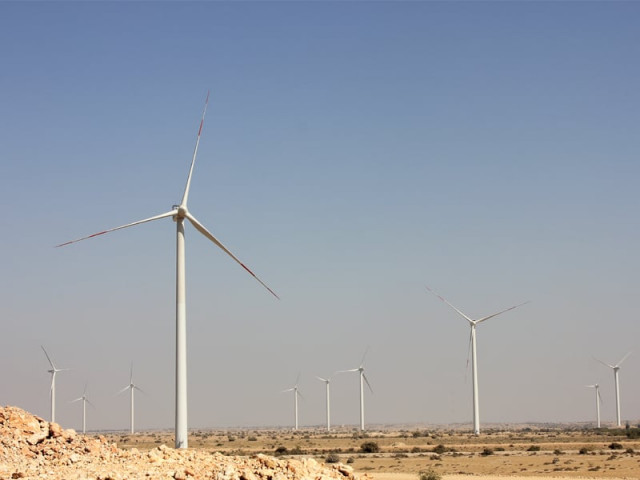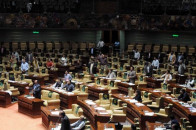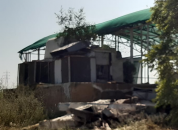Alternative energy: In Jhimpir lies the future of wind farming
The Gharo-Keti Bandar Wind Corridor has a potential to generate up to 50,000MW.

Alternative energy: In Jhimpir lies the future of wind farming
This is Pakistan’s national power grid. And soon it may carry a significant load from an alternative, clean, ‘green’ and a free source: Wind.
By February 2013, two wind power projects in Jhimpir - a town in Sindh’s Thatta district - are expected to inject around 106 megawatts (MW) into the country’s electricity transmission system.
Jhimpir falls in the Gharo-Keti Bandar Wind Corridor, which has a potential to generate up to 50,000MW of electricity, according to the Alternative Energy Development Board (AEDB). The organisation has already racked up 12 wind power projects there.
Land of wind turbines
From the Nooriabad Industrial Area, a 25-kilometre dirt track leads southeast to the Zorlu Energy Pakistan’s wind turbine farm in Jhimpir. The sun hangs low over the monotonous landscape: A vast stretch of uncultivated land dotted with bushes and trees. Then, the wind turbines pop up: Huge three-blade structures mounted at the top of towers going up 85 metres into the sky.

The 1,148-acre wind turbine farm by Zorlu, a subsidiary of the Turkish firm Zorlu Enerji, started off with five turbines in 2009. A $36.8-million loan from Asian Development Bank (ADB) and credit from other banks helped it expand to 33 turbines.
Once it gets the remaining formal approvals from the National Transmission and Despatch Company (NTDC), the $143-million project will be set to add 56.4MW to the system, says Mumtaz Hassan, the country manager of Zorlu Energy Pakistan. “We are ready and are targeting the end of January [2013] to start electricity supply,” he said.
Wind power projects are pricey. A 50MW farm costs around $135 million. The land sublease rates have gone up since the Sindh government took over land allocation from the AEDB in April.
That’s not all
In Jhimpir, another wind energy project, by the Fauji Fertiliser Company Energy Limited (FFCEL), will start contributing 49.5MW to the national grid from December 24.
Twelve independent power producers have also been given lands and another 12 are being considered, says Naeem Memon, the AEDB deputy director. Letters of interest have been issued to 47 companies to set up wind power projects between 5MW and 350MW capacity.
Wind is good
The Gharo-Keti Bandar Wind Corridor stretches around 70 kilometres along the coast and 110 kilometres inland. Identified by the AEDB and Pakistan Meteorological Department in 2005, it holds promise with average wind speeds of around 7.3 metres per second (m/s).
Only the first 12 projects will get a “wind-risk” guarantee. If the wind speed is lower than 7.3 m/s, the Pakistani government will pay the difference of energy not produced, Memon said. “The guarantee will not be offered to the future projects because AEDB has sufficient wind forecast data now,” he said.
‘Not a substitute’
Though it all sounds great, there are some caveats. “Wind power is not a substitute, it is a secondary source,” Zorlu’s site manager Murat Aziz puts it frankly. “If you invest without increasing capacity of other sources of electricity, the system will collapse when the wind stops.”
Experts suggest wind power should not comprise more than 10 per cent of the total power capacity installed. The 1,000MW expected from Jhimpir would only be around 3 per cent of Pakistan’s total power capacity of 21,000MW.
Also, linking two dozen power plants from the same place may result in power transmission issues. A more-supply-than-demand situation may trip the grid. But for now, Hassan and Memon are confident that maximum wind power generation can be achieved in Jhimpir during summers when the power demands are at the peak.
Published in The Express Tribune, December 24th, 2012.



















COMMENTS
Comments are moderated and generally will be posted if they are on-topic and not abusive.
For more information, please see our Comments FAQ